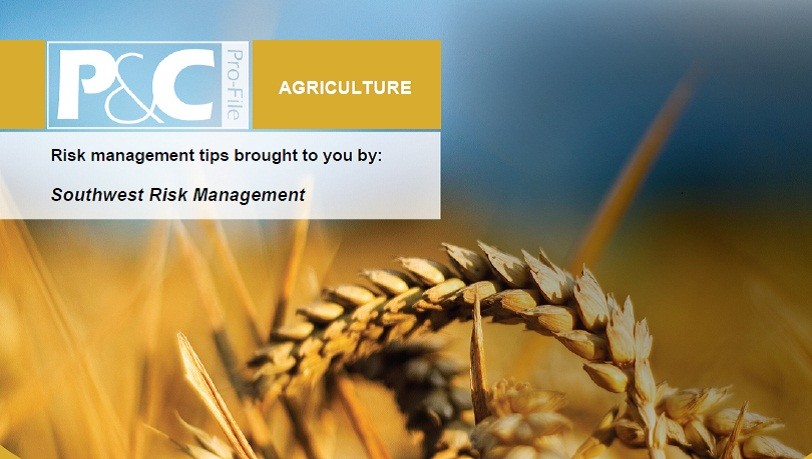Property and Casualty Profile – Agriculture
Did you know?
During a weather phenomenon known as El Nino, surface temperatures in the Pacific Ocean rise along the equator, which can cause a wide variety of weather effects. The Climate Prediction Center estimates that there is a 95 percent chance that the current El Nino will continue through the Northern Hemisphere this winter.
As a result, precipitation is expected to be above average on the West Coast and in the southern regions of the United States. However, El Nino is often unpredictable, and forecasts can frequently change.
USDA and EPA Promote Water Quality Trading Markets
This September, the U.S. Department of Agriculture (USDA) and the Environmental Protection Agency (EPA) hosted a joint workshop to expand benefits and resources for water quality trading (WQT) markets on farms, ranches and forest lands.
WQT is a market-based approach to control pollution more efficiently, as facilities that operate in the same watershed may have vastly different pollution control costs. Transactions in a WQT market make use of credits that represent a fixed amount of pollution that can be released. For example, a business with high pollution control costs could purchase additional credits from another source, which would then increase the amount of pollution it is allowed to release.
During the recent workshop, the USDA and EPA announced that new resources to promote WQT markets will soon be available. These include a policy guidance database from the EPA, information on state trading programs, environmental market data, a nutrient tracking tool and a website that will integrate information, tools and resources on USDA environmental markets.
For more information on the new resources and WQT markets, go to http://water.epa.gov/.
Safety Risks Around Manure Pits
Since May, there have been six deaths attributed to the highly toxic and flammable gases generated by hog manure pits. These pits can release hydrogen sulfide, methane, ammonia and carbon dioxide.
A buildup of these gases can be caused by any movement in a manure pit or through the spontaneous development of foam and bubbles. Any worker that enters a pit can fall unconscious within seconds, and methane creates the additional risk of fires and explosions.
Make sure workers never enter a manure pit without confined spaces training, a breathing apparatus and monitoring equipment. Also, instruct workers to never perform work that could create a spark near manure pits.
Risk Management Tips brought to you by: Southwest Risk Management, LLC









